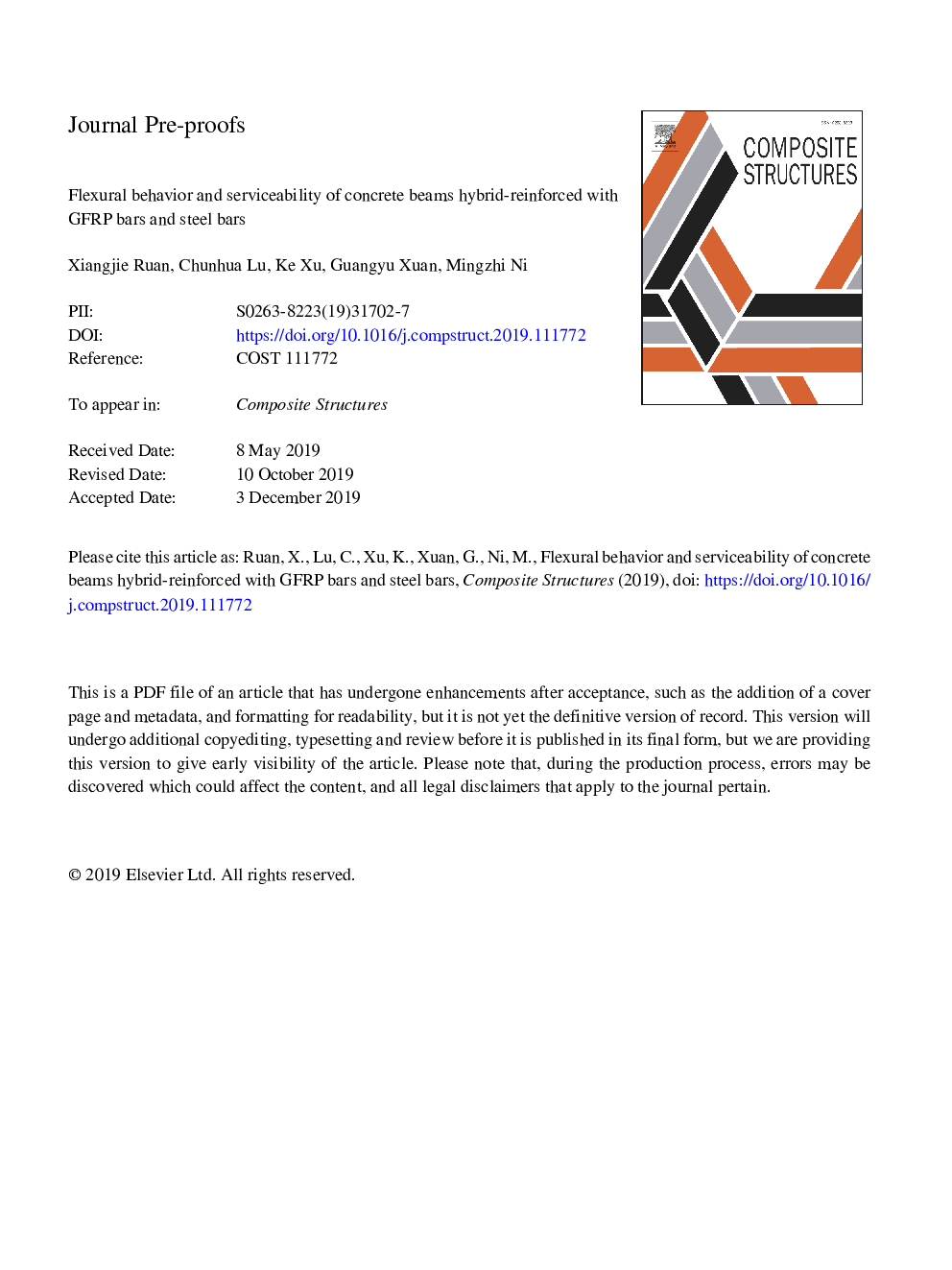| Article ID | Journal | Published Year | Pages | File Type |
|---|---|---|---|---|
| 13419263 | Composite Structures | 2020 | 59 Pages |
Abstract
In this paper, six concrete beams reinforced with a combination of GFRP (glass fiber reinforced polymer) bars and steel bars, and three concrete beams reinforced only with steel bars were designed and tested. Several flexural behaviors of the tested beams were analyzed and compared with theoretical models. The experimental and analytical results showed that under the designed service loads, the crack width and deflection that appeared in the GFRP-steel reinforced concrete beams developed faster than those shown by the steel-reinforced concrete beams. With the same total reinforcement amount of GFRP and steel bars, the ultimate flexural capacity of GFRP-steel reinforced concrete beams was nearly 91-97% of that of steel-reinforced concrete beams, but the deflection and maximum crack width were obviously larger than those of steel-reinforced concrete beams under the same service load levels. The beam deformability coefficient approximately decreased with increasing nominal reinforcement ratio Ïnom,F. The area ratio of GFRP bars to steel bars Af/As had a great influence on the flexural behaviors of GFRP-steel reinforced concrete beams. Comparisons showed that the data obtained for flexural capacity, deflection, deformability and crack width of GFRP-steel reinforced concrete beams were consistent with the predictions calculated by the proposed models.
Related Topics
Physical Sciences and Engineering
Engineering
Civil and Structural Engineering
Authors
Xiangjie Ruan, Chunhua Lu, Ke Xu, Guangyu Xuan, Mingzhi Ni,
